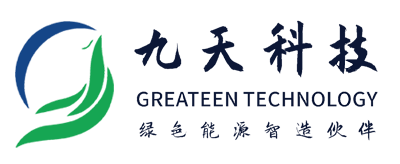Types and Development Trend of Photovoltaic Cell
The cell structure is a natural derivation from the conventional aluminum back surface field cell (BSF) structure. Silicon-based solar cells are dominated by aluminum back surface field (BSF) cells before 2015. BSF cells have inherent limitations: the recombination speed can not be reduced below 200 cm/s when applied to the metal aluminum film on the back surface of conventional BSF cells. Only 60% to 70% of the infrared radiation that reaches the aluminum backing is reflected back. By attaching a dielectric passivation layer on the back of the cell, this photoelectric loss can be greatly reduced, which is the working principle of PERC cells.
At present, PERC battery has become the mainstream battery in the market, by attaching a dielectric passivation layer on the back of the battery, it can greatly reduce the photoelectric loss, increase the light absorption rate, significantly reduce the back surface composite current density, and has the advantages of low cost, high compatibility with the original production line (only two main processes need to be added). It has become the mainstream direction of the development of high-efficiency solar cells at this stage, but with the gradual slowdown of the efficiency improvement of PERC cells, N-type cells with many advantages such as high efficiency, no light decay, low temperature coefficient and high weak light response have attracted more and more attention.
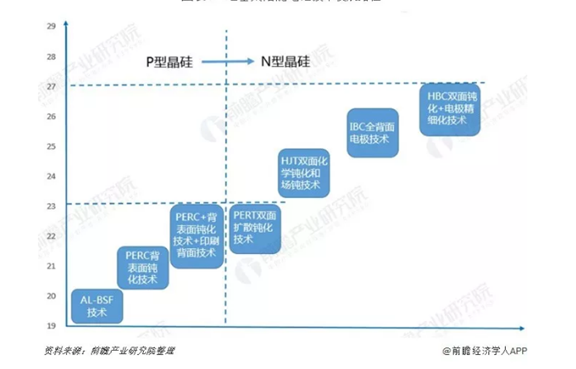
The maximum conversion efficiency of p-type photovoltaic modules has its inherent bottleneck. While N-type photovoltaic modules can obtain high efficiency with the process difficulty greatly increased, and the cost increases accordingly. P-type silicon wafer is simple in process and low in cost. N-type silicon wafer usually has a longer minority carrier life and higher efficiency, but the process is more complex: n-type silicon wafer is doped with phosphorus, the solubility of phosphorus and silicon is poor, the phosphorus distribution is uneven when pulling rod, p-type silicon is doped with boron, the segregation coefficient of boron and silicon is equivalent, and the dispersion uniformity is easy to control. N-type Si battery materials have very low boron content, and the photoinduced degradation effect caused by boron and oxygen pair can be ignored. Therefore, n-type Si battery has higher minority carrier life than p-type Si battery. These advantages make n-type Si battery have longer service life and higher efficiency. Therefore, n-type Si battery becomes the market pursuit direction and is likely to be the hot technology of high-efficiency battery industrialization in the next few years, Its market share will also increase in the next few years. Due to the harsh application environment of photovoltaic cells, its long-term stability becomes the key factor to be considered in the future. In the future, photovoltaic industry and its application should seek a balance between efficiency, cost and long-term reliability.
N-type monocrystalline silicon solar cells mainly include N-PERT cell, N-TOPCon cell, interdigitated back contact cell (IBC) and heterojunction cell (Hit).
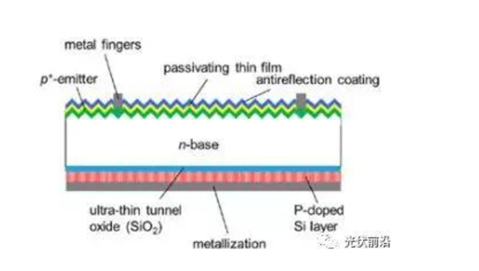
The N-PERT battery has a simple structure, can be produced by using the traditional P-type battery equipment to the greatest extent, and is easy to realize mass production, but the disadvantage is that the conversion efficiency is low.
The TOPCon battery concept was first proposed by Fraunhofer ISE at the 28th EU PVSEC in 2013.refer to picture for the TOPCon structure.
TOPCon technology is to prepare an ultra-thin tunneling oxide layer and a highly doped polysilicon layer on the back of the cell, which together form a passivation contact structure. The structure enables the surface layer on the back of the silicon wafer to be better passivated, and the combined effect of the ultrathin oxide layer and the polysilicon layer can greatly reduce the metal contact composite current and improve the open-circuit voltage and the short-circuit current.
In the IBC cell, the P-N junction and the electrode are all arranged on the back of the cell, so that the shading influence of a grid line on the front of the cell is eliminated, and the highest conversion efficiency can reach more than 23%. However, the production process of IBC batteries is complex and the investment cost of equipment is high, which is almost twice that of traditional batteries.see picture below for the IBC structure.
Compared with double-sided PERC battery, the cost performance of N-PERT technology is not so good, and TOPcon is difficult for mass production, Although IBC technology has high conversion efficiency, but it is difficult for mass build, and there is no domestic production performance till now. Hit has become the future development direction of high-efficiency batteries because of its fewer processes and mass production by domestic enterprises.
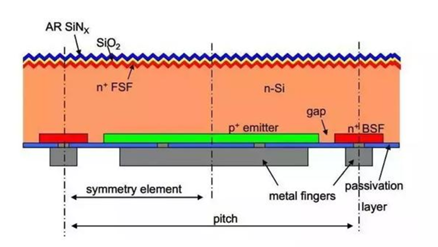
The hit (Heterojunction with Intrinsic Thin layer) cell is a cell structure in which a layer of undoped (intrinsic) hydrogenated amorphous silicon thin film is added between the p-type hydrogenated amorphous silicon and the n-type silicon substrate and between the n-type silicon substrate and the p-type hydrogenated amorphous Si. A standard crystalline silicon solar cell is a homojunction cell, in which the PN junction is formed on the same semiconductor material, while the PN junction of a heterojunction cell is formed using different semiconductor materials. Sanyo invented hit battery in 1990 and applied for registered trademark, so heterojunction battery is also called hit (Heterojunction Technology) or SHJ (Silicon Heterojunction). The performance of PN junction has been improved by using this technology. Therefore, the conversion efficiency reaches 23% (the laboratory efficiency is more than 26%), the open-circuit voltage reaches 729mV, and the whole process can be realized below 200 deg C. Efficiency of P-PERC monocrystalline cells in 2019.
In the field of cost, hit batteries cost less. As the hit cell combines the low-temperature manufacturing advantages of the thin-film solar cell, the hit cell does not need to be processed at a high temperature, and processing in a low-temperature environment is favorable for realizing the lamination of the hit cell, not only is the fuel energy greatly saved, but also the using amount of silicon is reduced, and the cost of silicon raw materials is reduced. At present, the thickness of the mainstream PERC battery silicon wafer is 160μm-180μm, limited by technical and process requirements, it is difficult to reduce to less than 160μm, and the thinning of the silicon wafer will lead to the decline of conversion efficiency. The perfect symmetrical structure and low temperature process of hit battery make it very suitable for lamination. The silicon wafer thickness of hit battery products produced by Junshi Energy is 150 μm, which is lower than that of PERC products. The Hit battery developed by Sanyo in 2013 uses silicon wafers with a thickness of only 98 μm and a cell efficiency of 24.7%. With the development of silicon wafer cutting technology, the thickness of silicon wafers used in hit batteries will gradually decrease, which is expected to decrease to 100 μm by 2025, and the cost of silicon wafers will decrease to 0. 25 yuan/W.
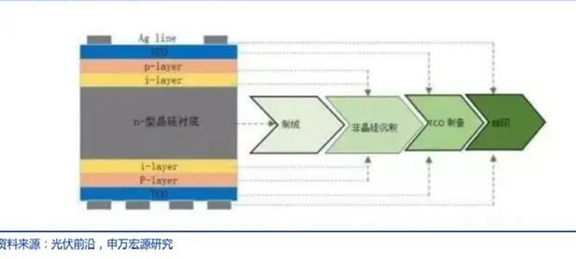
Compared with P-PERC and TOPCon, the production process of Hit is much simplified, so it has great potential for industrialization. P-PERC process requires 8-10 process steps, the process difficulty lies in aluminum oxide passivation, laser drilling problems,; N-TOPcon process has 11-12 process steps, the process difficulty lies in boron diffusion, polysilicon production, doping, around plating, domestic representative enterprises are Trina Solar; Hit process only needs 4 working procedure :Process difficulties lie in efficient cleaning and amorphous silicon preparation. In theory, the Hit process has fewer steps, which can greatly reduce the defective rate of batteries, as well as other production costs such as labor, operation and maintenance.
A hit battery has low attenuation and longer life. Low temperature coefficient and lower light-induced attenuation of hit cell: Compared with the temperature coefficient of monocrystalline silicon cell of -0.42%/℃, the temperature coefficient of hit cell can reach -0.25%/℃, so that the cell still has good output even under the condition of light warming. At noon of a day, the power generation of Hit cells is 8 to 10% higher than that of ordinary crystalline silicon solar cells. The power generation of double glass Hit module is more than 20% higher, which has higher user added value. As that upper surface of the hit battery is the TCO, the charge cannot generate polarization phenomenon on the TCO on the surface of the battery, so the hit battery doe not have PID and LePID phenomena. After 25 years, the power generation of Panasonic Hit module decreased by only 8%. Hit double-sided batteries can also achieve a longer life of 5-15 years compared with the current mainstream components of 25 years through double glass packaging.
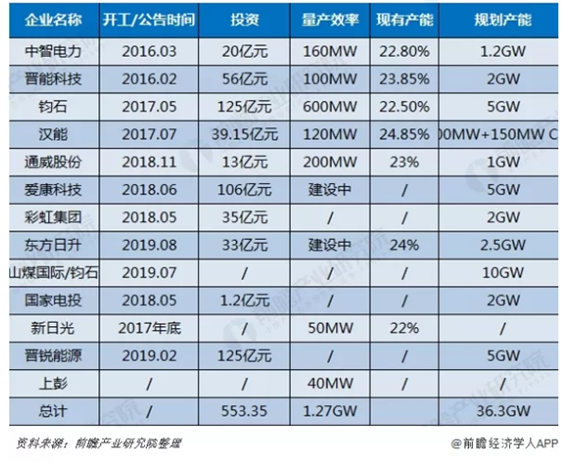
For IBC batteries, the process is much more complex than the traditional method. The process steps of conventional batteries are eight steps, while IBC batteries need twenty steps. IBC also has high requirements for silicon wafers, and its complex steps lead to its cost about twice that of ordinary batteries, and its industrialization progress is very slow. Because the front and back sides of IBC are different from the conventional ones, the component process also needs to be customized, which also restricts its industrialization. In the future, IBC batteries are mainly aimed at the high-end market: the advantages of IBC batteries lie in high efficiency and better outlook.
At present, the global hit production capacity is about 3GW, the participants plan hit production capacity to exceed 15GW, and some enterprises have begun pilot test or small batch production. Previously, due to the high initial investment of equipment and strict requirements for process technology, most manufacturers are still in the wait-and-see stage of heterojunction battery technology. In recent years, as high-efficiency batteries have become the mainstream of the market, and heterojunction battery technology continues to improve, the cost continues to decline. Each market main body speeds up the investment layout of Hit battery. Internationally, Japan's Sanyo, which has a capacity of 1GW and a mass production efficiency of 23%, is the leader in hit.
As enterprises increasing hit battery investment, a number of benchmarking enterprises and projects may be put into operation from the end of the year to 2020, and it is expected that more than 4-7GW of new hit capacity will be put into operation in 2020, leading the cumulative capacity of several years. This will further enhance the industry's confidence in heterojunction batteries, and 2020 may be the first year of Hit industrialization. The technology of PERC battery is relatively mature, and its industrialization has reached a certain scale, so there is little room for the non-silicon cost to be reduced. According to the comprehensive estimation of various links, the cost of hit battery will be greatly reduced in the future through the promotion of the industrialization scale of hit battery, the reduction of material consumption promoted by technological progress and the localization of key materials and equipment, so as to gradually reach the marginal condition of mass production.
